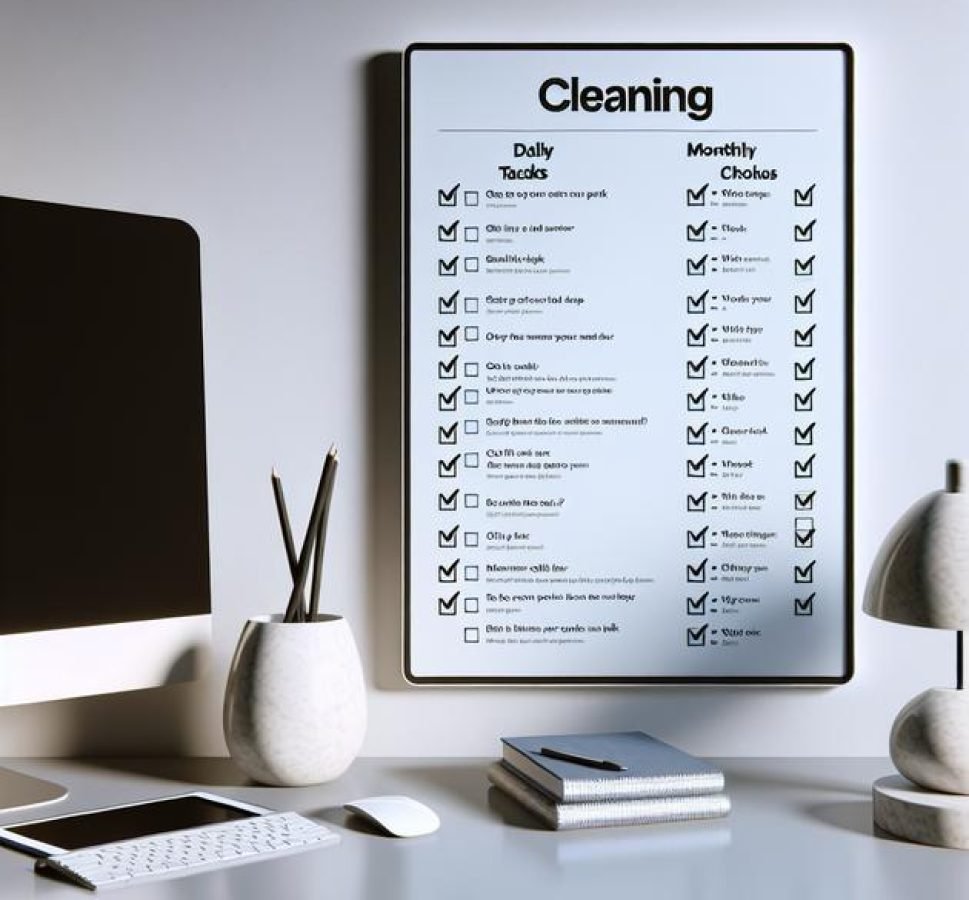A cleaning schedule that works involves setting realistic goals, prioritizing high-traffic areas, and using tools and technology to stay organized, allowing you to maintain a clean and comfortable home efficiently by adapting the routine to your lifestyle needs.
Crafting a personalized cleaning schedule can turn a daunting task into a manageable routine. Ever thought about how it simplifies your life? Well, let’s explore some tips and tricks to get you on track without feeling overwhelmed.
choosing the right cleaning frequency
Choosing the right cleaning frequency is essential to keep your home in perfect condition without overburdening yourself. Consider the different areas of your house and the activities that take place in each. High-traffic zones like the kitchen or bathroom may require more frequent cleaning, while guest rooms or storage areas can be maintained less often.
Evaluating Your Lifestyle
Your personal lifestyle plays a critical role in determining cleaning frequency. If you have pets or children, you might find a need for more regular cleaning to manage messes. Similarly, for those with busy schedules, a simplified routine that evenly distributes tasks throughout the week can prevent overwhelming cleaning sessions.
Trial and Error
Don’t hesitate to experiment with different schedules to find what suits you best. You might prefer daily tidying with a thorough cleaning on weekends, or perhaps a particular room every day. Adjust as needed to feel comfortable and maintain a fresh living space.
Whether you clean weekly or monthly, consistency is key. By understanding your needs and adjusting the frequency accordingly, you can develop a schedule that keeps your home clean and your mind at ease.
listing all cleaning tasks
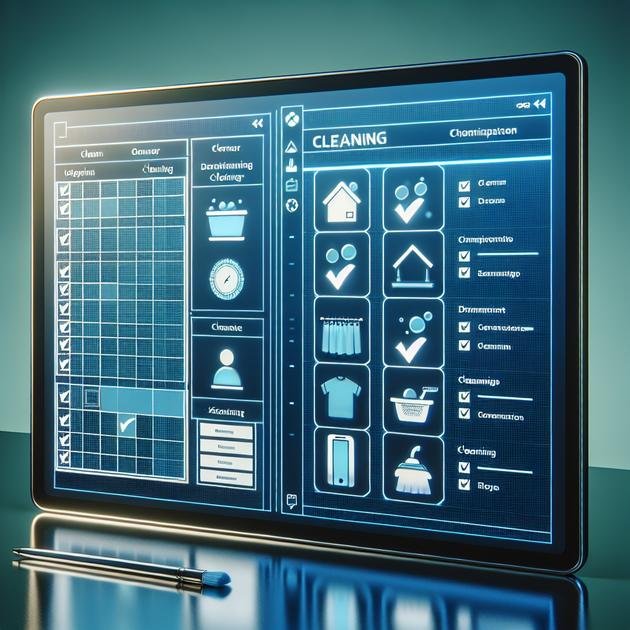
Creating a comprehensive list of cleaning tasks is the foundation of an effective cleaning schedule. Begin by walking through each room in your house and noting down all cleaning tasks that need to be done. This includes dusting, vacuuming, mopping, and specific tasks like window cleaning or appliance maintenance.
Categorizing Tasks
Once you have your list, categorize tasks based on frequency. Some tasks need daily attention, like wiping kitchen counters, while others such as deep cleaning the oven or washing curtains can be done monthly.
Using Tools for Efficiency
Leverage tools like spreadsheets or cleaning apps to keep your list organized and accessible. These tools can help you easily update and prioritize tasks, ensuring nothing is overlooked.
With a detailed and categorized list, you set the stage for a manageable and efficient cleaning routine. This proactive approach keeps your home clean and saves you time in the long run.
prioritizing high-traffic areas
Ensuring cleanliness in high-traffic areas is crucial for maintaining a neat home. These are spaces that experience heavy footfall, like entryways, hallways, and the living room. These areas accumulate dirt and clutter quickly.
Daily and Weekly Focus
Focus on frequent cleaning in these zones. Daily sweeping or vacuuming can prevent dirt from spreading to other parts of your house. A weekly deep clean, including wiping down surfaces and organizing clutter, helps maintain order.
Use Smart Storage Solutions
Incorporate smart storage solutions to manage items that typically create clutter. Hooks for bags and shelves for shoes near the entryway can significantly reduce mess and make cleaning easier.
By prioritizing these high-use spaces, your home will not only look cleaner but also feel more welcoming, providing a comfortable environment for your family and guests.
creating a daily, weekly, monthly routine
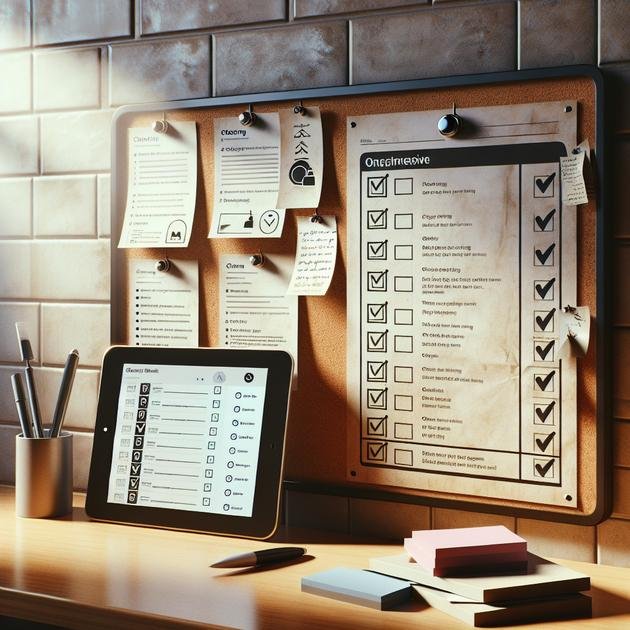
Establishing a cleaning routine that spans daily, weekly, and monthly tasks can greatly simplify home maintenance. For daily tasks, focus on basics like making beds, washing dishes, and tidying up clutter. These quick tasks prevent mess from piling up.
Weekly Tasks
Dedicate time weekly to chores that require a bit more effort, such as vacuuming floors, dusting surfaces, and cleaning bathrooms. A consistent schedule keeps your home feeling fresh and organized.
Monthly Deep Clean
Monthly tasks include deeper cleaning activities like washing windows, cleaning under furniture, and clearing out the fridge. This thorough approach tackles areas that are easily overlooked but essential for long-term cleanliness.
By spreading tasks out, you can maintain a spotless home without feeling overwhelmed. Use a calendar or app to track your schedule and make adjustments as needed.
how to stick to your schedule
Sticking to a cleaning schedule requires commitment and practical tips. Start by setting realistic goals that match your lifestyle. Avoid overloading yourself with too many tasks in one day, which can lead to frustration and burnout.
Daily Reminders
Use reminders or alarms on your phone to ensure you don’t forget important tasks. Consistency is key, so try to complete tasks at the same time each day.
Reward System
Implement a reward system to motivate yourself. Small incentives, like treating yourself to a favorite snack after finishing chores, can make cleaning more enjoyable.
Sharing responsibilities with family members also keeps everyone accountable and ensures the workload is balanced. Reflect regularly on what’s working and adjust your schedule if needed to stay on track.
tools to help you stay organized
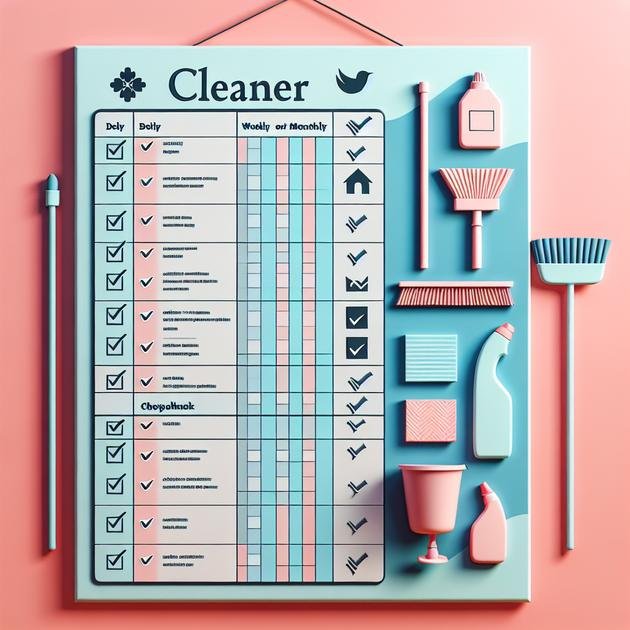
Living in a tidy home is easier with the right tools to keep you organized. Consider using digital planners or apps designed for managing tasks and reminders. These can help you visualize your cleaning schedule and adjust it as needed.
Checklists and Labels
Physical tools like checklists and labeled storage can also make a big difference. Checklists ensure you don’t miss any essential tasks, while labels on storage bins help maintain order by clearly indicating contents and their rightful places.
Utilize Smart Home Devices
Smart home devices, such as robotic vacuums or voice-activated assistants, can automate repetitive chores, freeing up your time for other activities. These gadgets make your routine more efficient and less daunting.
By leveraging a mix of digital tools and practical organizers, you can maintain a cleaner home and a more structured life with ease.
involving family members
Getting the whole family involved in cleaning can make the process more efficient and even enjoyable. Assign specific tasks to each family member based on their capabilities and preferences. Children can manage simple chores like tidying their rooms, while adults handle more involved tasks.
Teamwork and Communication
Encourage teamwork by making cleaning a group activity. Play music or turn chores into a game to keep spirits high. Open communication ensures everyone knows their responsibilities and helps address any challenges quickly.
Establish Routines and Rewards
Setting a fixed routine helps everyone adjust to regular cleaning habits. Create a reward system to motivate family members, such as a fun outing or a special treat when goals are met.
By involving everyone in the household, cleaning becomes less of a burden and more of a shared responsibility, strengthening family bonds and maintaining a tidy home.
adjusting your schedule to life changes
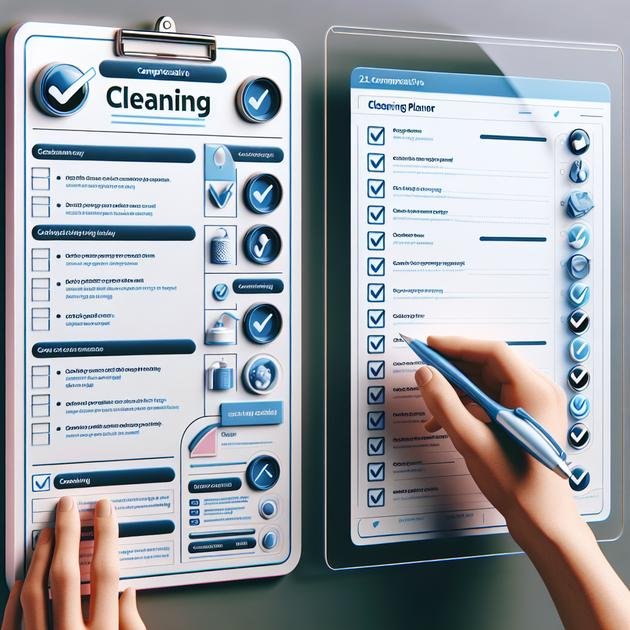
Life changes such as a new job, a growing family, or moving homes can affect your cleaning schedule. Flexibility is key to maintaining order. Review your routine and identify tasks that can be adjusted to fit new circumstances. Some tasks might need to be done more often, while others can be scaled back.
Prioritize and Simplify
Focus on essential chores that maintain cleanliness and comfort. Streamline your routine by grouping similar tasks together or delegating responsibilities to other family members.
Use Technology
Leverage technology to keep track of your new schedule. Apps and reminders can help you stay on top of tasks, even when life gets hectic. Regularly evaluate your schedule to ensure it continues to meet your needs.
Keeping a flexible approach allows you to adapt your cleaning routine without compromising on a tidy home, even as your life evolves.
Conteúdo não disponível


